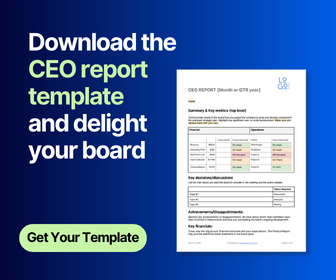Board diversity and inclusion
Diversity and inclusivity in a company has to start from the top down in order to truly impact an organisation, and that means taking a look at your board of directors. Homogeneous board composition is not going to work in 2022, not only because it signals your nonprofit or business is behind the times, but also because it’s just bad business, and facilitates an unhealthy culture.
“I’m always surprised by how few people think diversity is an issue,” said Elizabeth Aris, non-executive director of BNK Bank and advisory board member of Agility Executive Search. “Every woman I know thinks it’s an issue, and some of the men I know do, too. There’s a lot of men who obviously don’t think it’s a big enough issue to change anything. I don’t really understand that because the data shows greater diversity leads to higher performance, so what’s stopping them?”
A 2019 McKinsey analysis found that companies in the top quartile for gender diversity on executive teams were 25% more likely to have above-average profitability than companies in the fourth quartile. The same analysis found companies with higher percentages of women executives outperformed companies without gender diversity in leadership. When it comes to ethnic or cultural diversity, McKinsey found more top-quartile companies outperformed those in the fourth quartile by 36% profitability.
“Diversity ensures that decision-making is more robust because the discussion that has led to that decision has come from different quarters, different life experiences, different ways of thinking,” said Simon Telfer, managing director of Stimulus NZ board specialists and founder of Appoint Better Boards, New Zealand’s largest governance community. “Discussions within diverse boards are richer and therefore decisions are stronger - at one level it’s as simple as that.”
Depending on the industry your company is in, diversity can look like many things – there’s diversity of age, thought, ethnicity, gender, experience and so on. But if your board is looking a bit too male, pale and stale, and you recognize that it’s time to change, here’s a good framework to consider…
Be honest about why you want to have a more diverse board
“You’ve got to really want it. It’s worth reflecting on whether the organisation is just doing this because everyone else is, or if it is being done out of a genuine desire for diversity” said Telfer.
Boards, particularly those that have had the same members or same types of members for years, should really examine their potential blindspots. They can start by looking at their community, employee and customer base, comparing this to the demographics of those who are leading the company’s strategy and values. Who is going to be the voice for each of the key stakeholders around the board table?
Educate yourself on the issues diverse people face in environments like board rooms
Anecdata is not data. If you think just because you haven’t personally witnessed discrimination faced by women or minority groups, or because your wife or secretary tells you they don’t have issues, that it doesn’t exist, you’re being willfully ignorant.
Make sure your board spends some time actually learning about the issues members of diverse populations face so that you can cultivate some compassion and have an understanding of how daunting it might be for a new board member to join a sea of the same faces. It might also help you be more empathetic to why there are fewer opportunities for diverse peoples.
“Even with the Australian Parliament thing where they gave these guys an hour of empathy training, it’s just not proportional to the lifetime of crap that most women feel they’ve put up with,” said Aris. “And it’s not that we want to be crazy about it. We don’t want to have to think about it or deal with it, but we do, all day, everyday.”
It’s got to be a top-down approach
Having strong leadership in this space is the key to making change. Aris says whoever is chairing the board or the nominations committee has to be the champion of diversity.
“You’ve got to have someone who’s prepared to make the change, otherwise, and particularly in small markets like Australia, you get the same people on multiple boards, and it never changes,” said Aris. “I know people who have been on the board of one bank for a long time, resigned at the end of a decade and then the next week are serving on the board of another major bank. I mean, surely we have more candidates than that.”
Beware ‘diversity of thought’ cop outs
“We have to be really careful with concepts like diversity of thought, because I sometimes feel it can be used as a cop out,” says Telfer. “Organisations will say ‘we may all look the same and come from similar backgrounds but it’s fine because we all think differently.’ On one level that’s correct because no two people think exactly the same, but is the thinking amongst board members really that different?”
If you’re genuine about diversity of thought, you need to break it down. What could someone of a different generation bring to the table? What thinking can arise from experience in a different sector? Do we need more conservative thinking or more ambitious or creative ways of thinking?
Objective measurement, ideally done by an external professional, is the key to genuine diversity of thought. This starts with measuring the thinking around the current board table. Once you’ve put your board members into thought categories, it will be easier to measure and determine if someone new is going to bring true diversity of thought or just reinforce the type of thinking that’s already around the table.
Get inspired by similar organisations that have diversified their boards
Some organisations are slower or more reluctant to diversify because they operate in conservative sectors, like agriculture or insurance. Those are tougher nuts to crack, but diversity is still important because it could help move the needle towards greater market reach for that company.
Telfer says a good way to encourage those types of boards to diversify is to showcase other organisations that are similar to them that have made that step and the benefits it’s brought.
“Forcing diversity is obviously counterproductive so I prefer the approach of facilitating conversations with other organisations that they respect, who have embraced diversity and can share how it’s advanced their business,” said Telfer.
Use succession planning to your advantage
Succession planning is a strategy for helping to determine what the future leaders of your organisation will look like, and this is a good chance to examine some of those blindspots and make a plan for the types of diverse candidates you’d like to see on the board.
“Succession planning is ensuring that an organisation doesn’t start to get stale,” said Telfer. “If it keeps refreshing it can keep the thinking current. Succession gives you an entree to start a conversation around which board members are going to be retiring in one or two years’ time, when will we seek their replacement and is there a need to bring in a different sort of individual.”
This will help your organisation stay in tune with what’s happening out in the broader marketplace.
Avoid tokenism – hire more than one diverse person at a time
You know you’re being tokenistic if you pat yourself on the back for hiring one woman and call it a job well done.
“Again, there’s tonnes of research that shows that having one woman just doesn’t change the equation,” said Aris. “Having three or more is what really moves the dial. I still can’t believe we’re still talking about this, but in this day and age, when there are 51 percent women, why there aren’t at least 50 percent women on every board, every management committee.”
Aris recently joined the board of BNK and said they brought in three new directors in quick succession. Each of those new directors was diverse.
“I think that move in itself, after having had a very long established traditional board, was actually a really good idea because you had three new people, not one, so it wasn't one person who's kind of put on the spot,” said Aris. “And they were all diverse, so you got that change immediately.”
Diversity is not a binary decision
“Diversity used to be framed as a binary decision – either you get the best person for the role, or you get someone diverse,” said Telfer. “People used to say, you know, we really want diversity, but at the end of the day, it’s got to be the best person for the job. So they were already saying you can only have one or the other.”
This is an unhelpful and regressive way of thinking. You can 100 percent have both, often because the talent is available for the best person for the role to also be the person with the most diverse background or perspective.
Be your kind selves to new appointees
If you have made intentional moves to bring on more diverse board members, you might be feeling a bit nervous about the transition. Maybe you’re worried they’ll feel like a token, even if that’s not your intention. Aris says just to be your kind selves.
“I’ve been in that situation myself, and what I found when I got into the room with all the crusty old white dudes was they were actually really great,” said Aris. “They were fun and interesting and welcoming. They were very open to hearing a different point of view. It all just came down to people being genuinely open and respectful.”
Change the system structurally
Women in the workplace have had to adjust the way they dress, act and behave to suit the male-dominated world. They’re often looked down upon for talking about their kids, there is rarely childcare available at offices and there is generally less flexibility in scheduling. For women to want to join more board rooms, board rooms need to become more accommodating not just to women, but to parents.
Part of the structural issues in boards that just recycle the same types of people is the fact that there are simply less opportunities given to women. Boards can help fix this by allocating funds towards programs that train women and other people of diverse backgrounds so that the board has access to a greater talent pool.
“I do think it’s systemic,” said Aris. “It’s ingrained in every part of our culture. I think men have just been doing whatever the hell they want for so long they’ve kind of forgotten that there’s a whole other half of the population out there who have got an opinion. It’s just not okay that there isn’t a level playing field for everyone, and we as females who don’t want to repeat this for our kids have got to stop it.”
Share this
You May Also Like
These Related Stories

Achieving Diversity and Inclusion in Governance and Board Meetings
.jpg)
How to Increase Board Diversity
.png)

